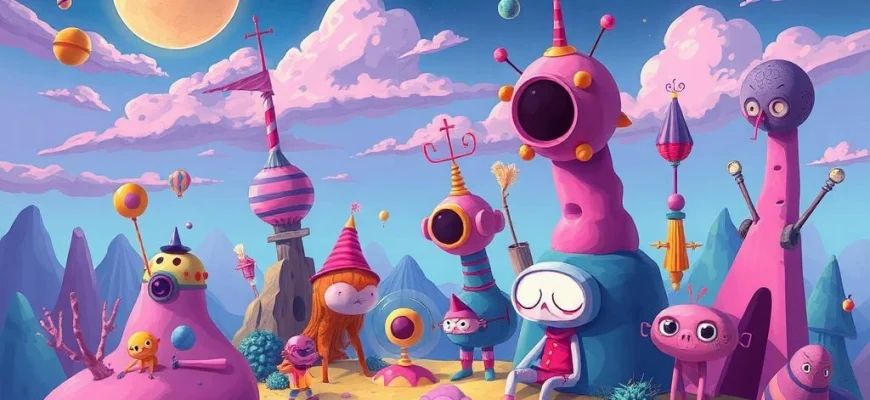If you enjoyed the quirky and surreal humor of 'A Tale of Legendary Libido (2008),' you're in for a treat! This article explores 10 similar movies and shows that share its absurdist comedy, eccentric characters, and offbeat storytelling. Whether you're a fan of bizarre humor or just looking for something refreshingly different, these recommendations will keep you entertained.

House (1977)
Description: A psychedelic horror-comedy with surreal visuals and a disjointed narrative. Its dreamlike atmosphere and bizarre, often humorous scares align with the reference's off-kilter sensibilities.
Fact: The film was marketed as a family-friendly movie in Japan, despite its terrifying and surreal content.
 Watch Now
Watch Now 
Pom Poko (1994)
Description: A Studio Ghibli film that mixes environmental themes with absurd humor and supernatural elements. Its portrayal of shape-shifting raccoons and satirical take on human society parallels the reference's blend of fantasy and social commentary.
Fact: The tanuki (raccoon dogs) in the film are depicted with exaggerated testicles, a nod to traditional Japanese folklore where tanuki are often portrayed this way.
 Watch Now
Watch Now 
Uzumaki (2000)
Description: A horror film based on Junji Ito's manga, featuring grotesque and surreal imagery centered around spirals. Its nightmarish visuals and darkly comedic undertones mirror the reference's blend of horror and absurdity.
Fact: The film's director, Higuchinsky, had never read the original manga before being hired to adapt it.
 Watch Now
Watch Now 
The Legend of the Stardust Brothers (1985)
Description: A surreal and offbeat musical adventure that blends absurd humor with a psychedelic visual style, much like the reference film. It features eccentric characters and a whimsical narrative that defies conventional storytelling.
Fact: The film was originally conceived as a concept album by Haruo Chikada, and its soundtrack plays a central role in the movie's plot.
 Watch Now
Watch Now 
The Great Yokai War (2005)
Description: A fantastical and visually rich film that combines folklore with modern storytelling, featuring bizarre creatures and a child protagonist navigating a strange world. The film's blend of humor, horror, and adventure mirrors the reference's tone.
Fact: The movie features over 100 different yokai (supernatural creatures) from Japanese folklore, each with unique designs.
 Watch Now
Watch Now 
Dead Leaves (2004)
Description: A frenetic, visually chaotic anime with rapid-fire pacing and surreal humor. Its non-stop energy and bizarre character designs echo the reference's eccentric and unpredictable nature.
Fact: The entire film was produced in just six months, an unusually short timeframe for an animated feature.
 Watch Now
Watch Now 
Mind Game (2004)
Description: A wildly inventive anime that breaks narrative and visual conventions, blending multiple animation styles and existential themes. Its experimental approach and philosophical undertones resonate with the reference's unconventional storytelling.
Fact: The film's director, Masaaki Yuasa, hand-drew many of the key animation sequences himself to maintain creative control.
 Watch Now
Watch Now 
The Machine Girl (2008)
Description: A hyper-violent, over-the-top action film with a darkly comedic tone and exaggerated gore. Its absurdity and unapologetic embrace of extreme content align with the reference's irreverent style.
Fact: The film's special effects were created using practical methods, including homemade prosthetics and gallons of fake blood.
 Watch Now
Watch Now 
Why Don't You Play in Hell? (2013)
Description: A hyper-stylized, violent comedy about filmmaking and gangsters, filled with over-the-top action and meta-humor. Its chaotic energy and self-referential storytelling align with the reference's irreverent tone.
Fact: The film features a 10-minute-long one-take action sequence that required extensive choreography and rehearsal.
 Watch Now
Watch Now 








